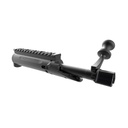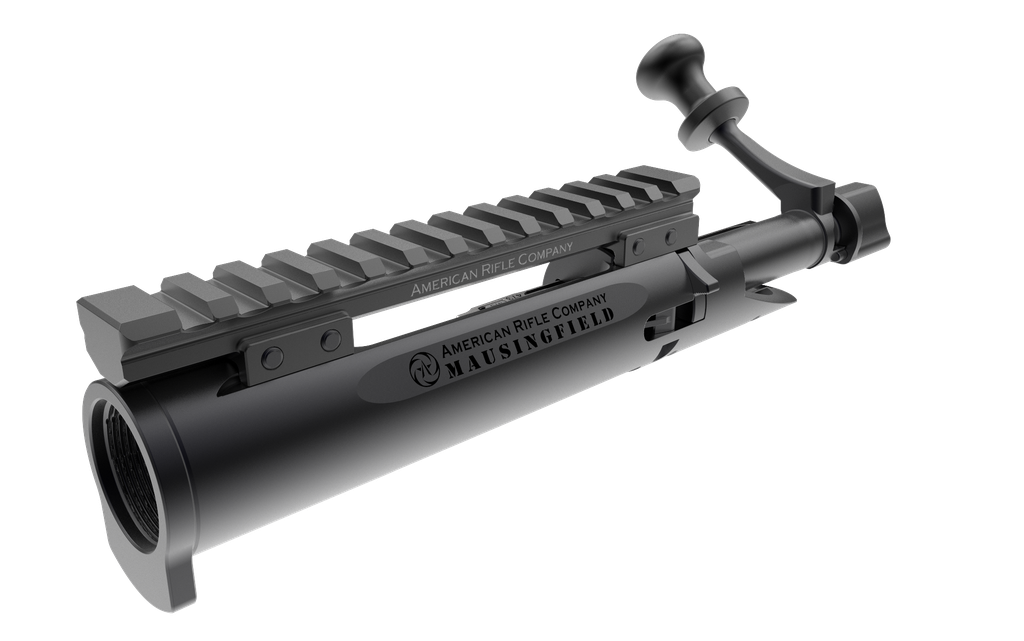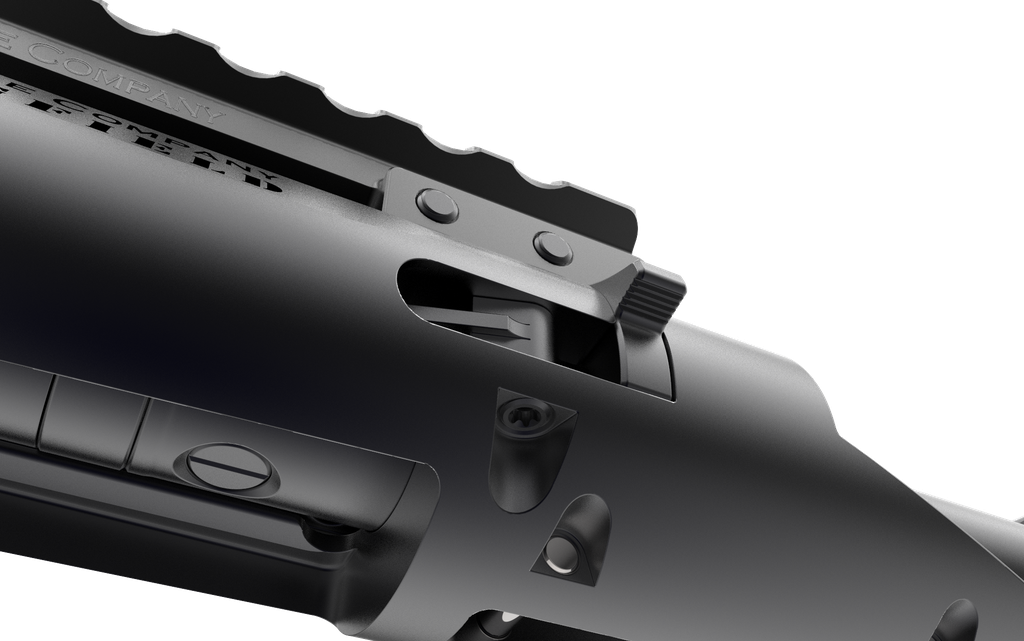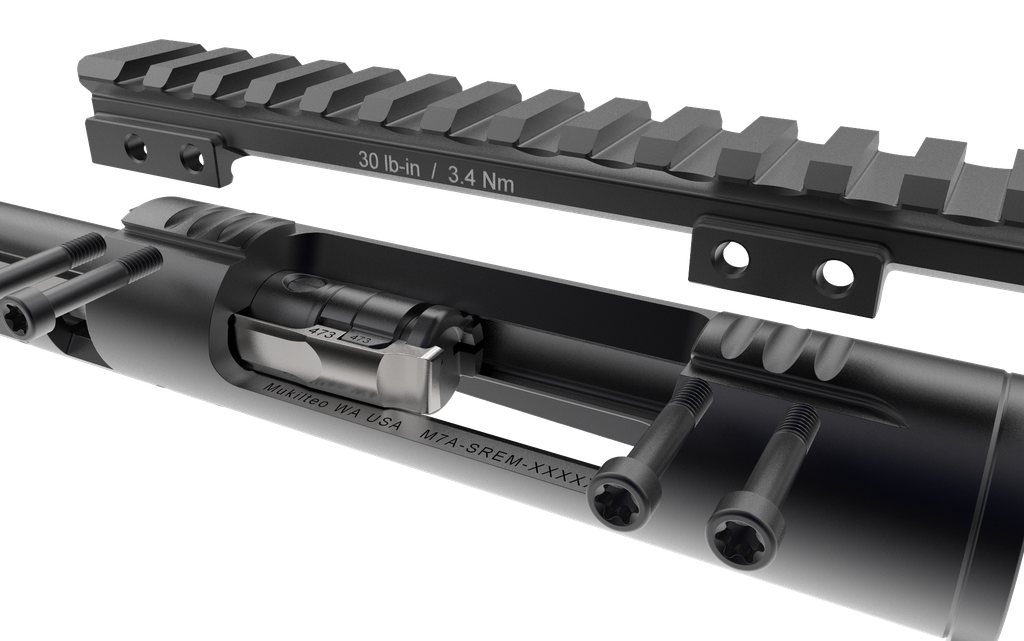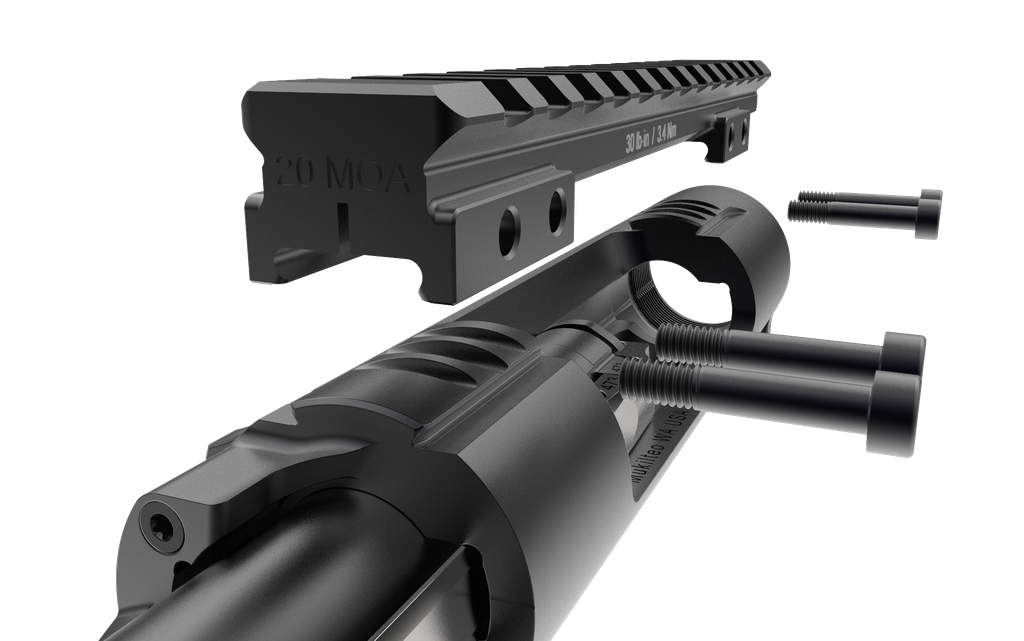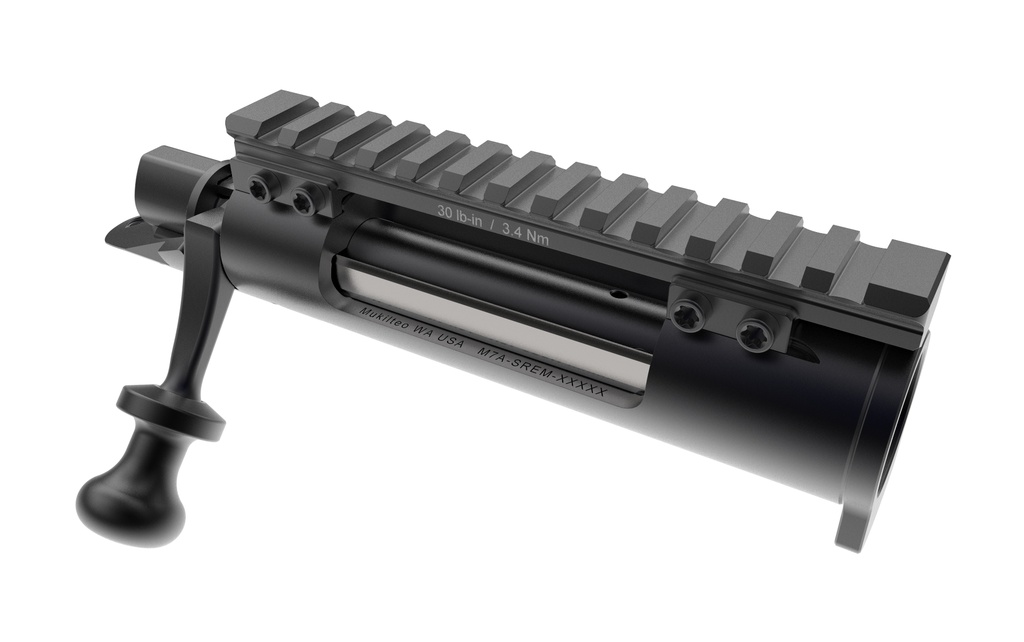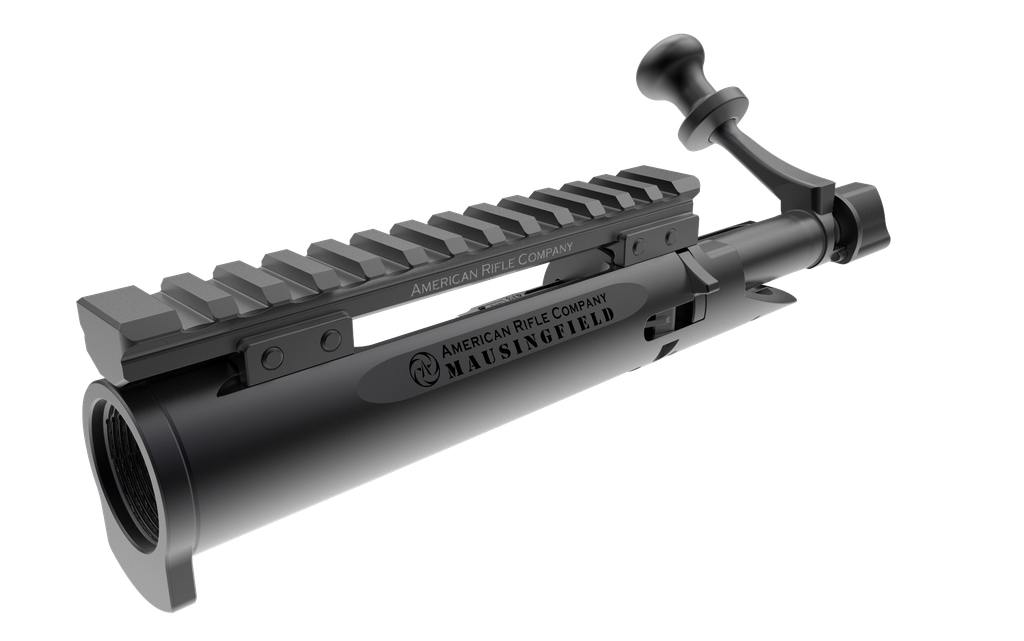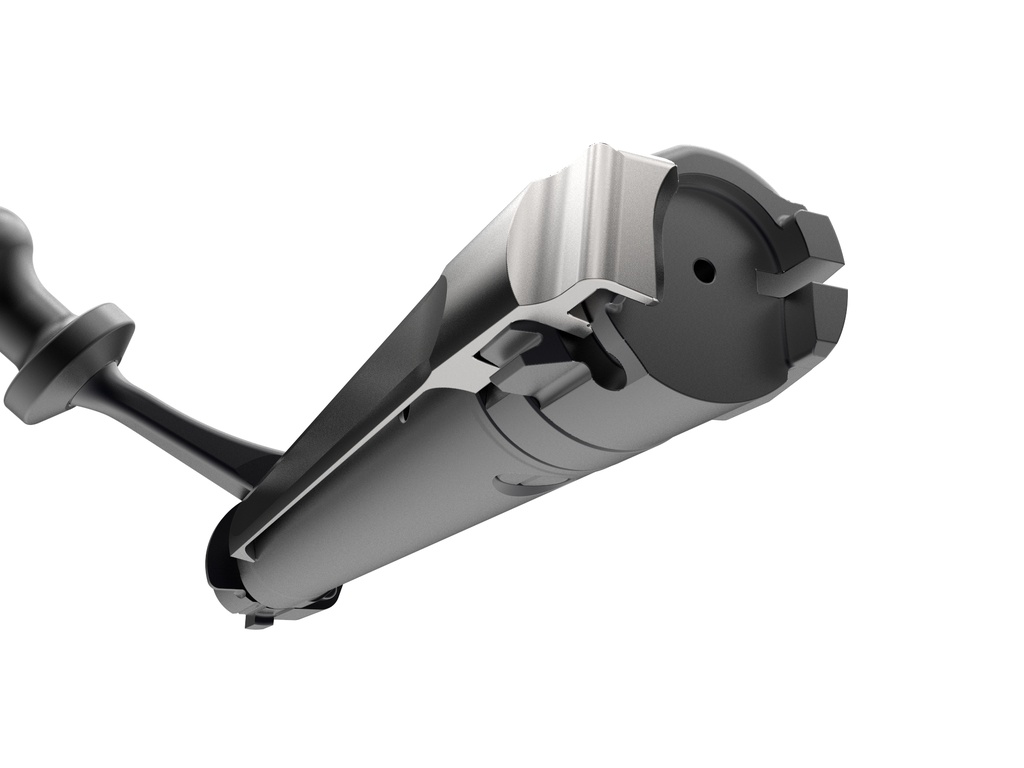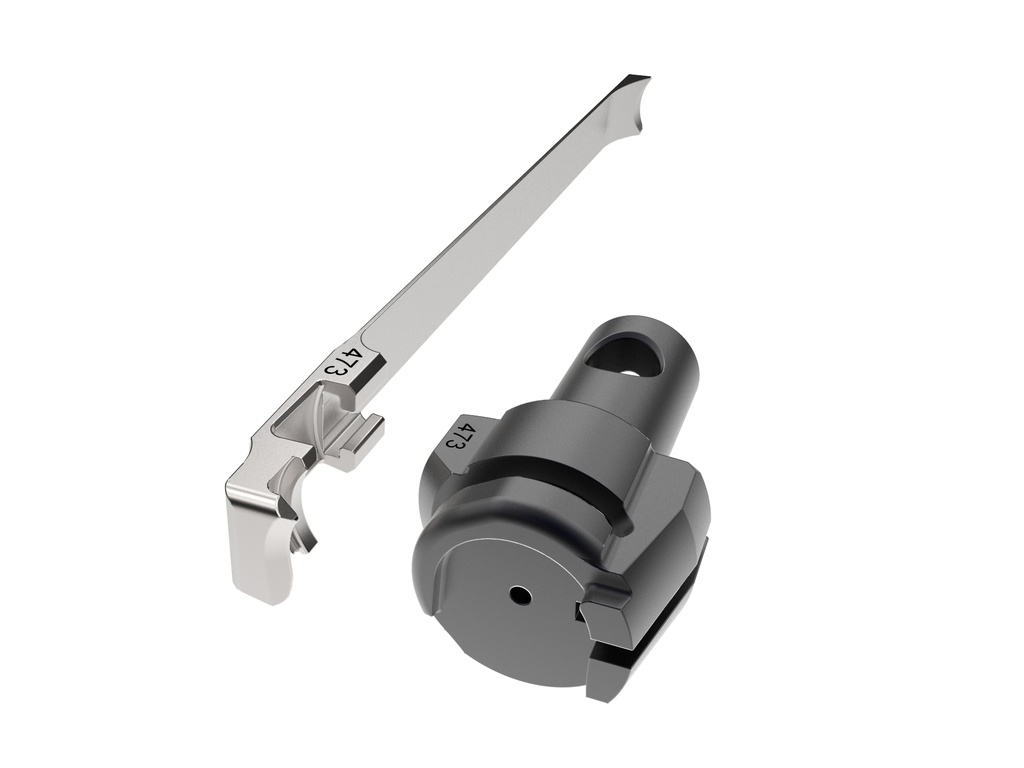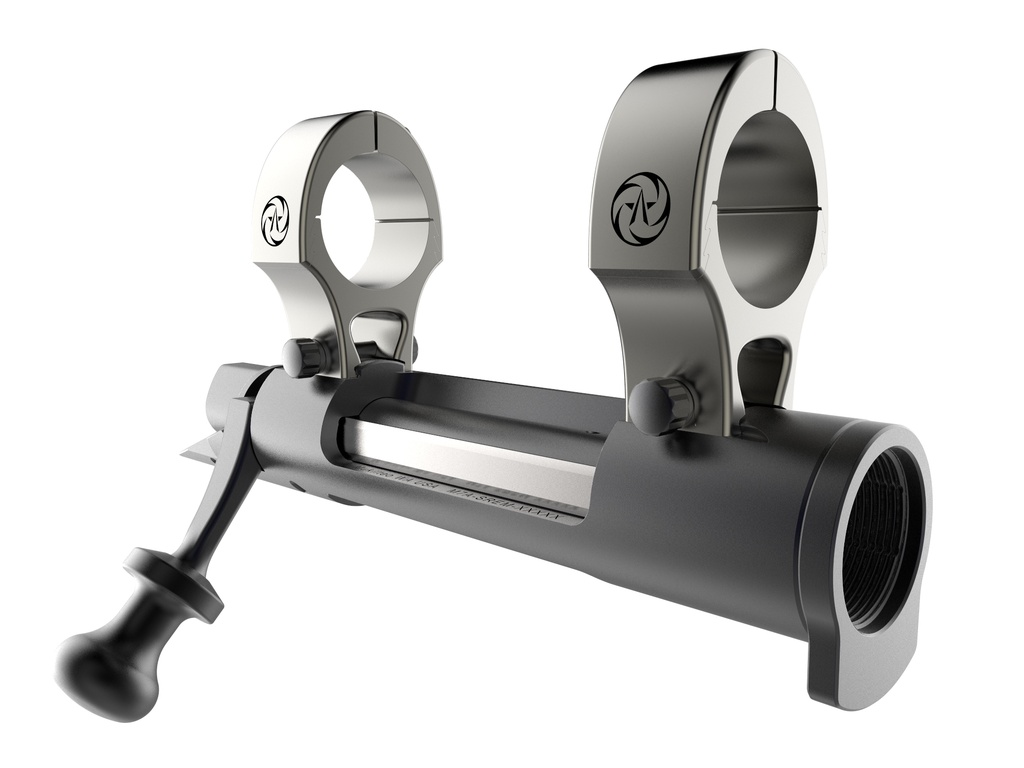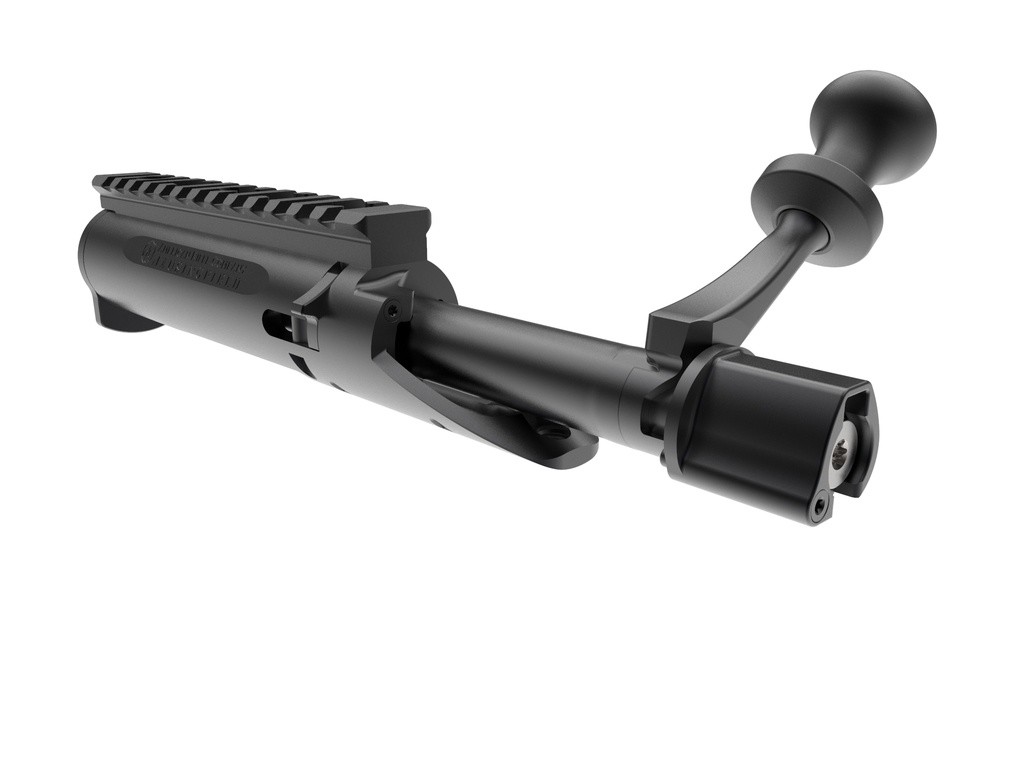Mausingfield Bolt Action: Short Action / Open top
REMAINING INVENTORY IS SHORT ACTION OPEN TOP ONLY
| Action Length: Short |
| Ejection Port & Magwell: Open Top, BDL bottom metal |
FFL ITem: transfer required
Please have your FFL email a copy of their license to [email protected]
Subject Line: "FFL for SO-[your order #]"
Mausingfield Bolt Action
Featuring a Mauser extractor and a Springfield ejector, American Rifle Company’s Mausingfield action is a unique fusion of modern design and battle-proven features from bolt actions past.
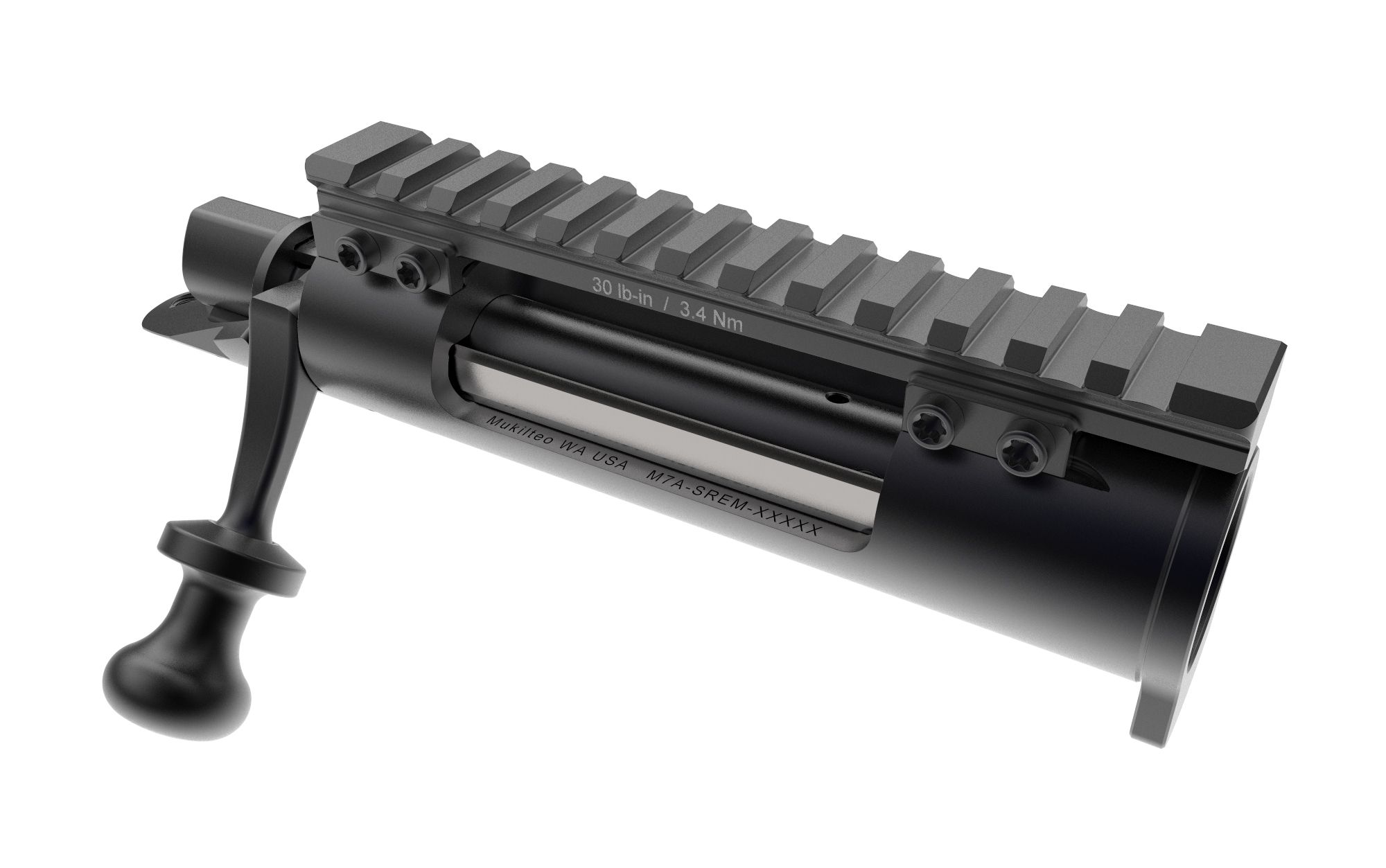
Mausingfield Bolt Action
The 21st century revival of Mauser’s 19th century masterpiece.
- Proudly engineered and manufactured in the USA
- Complete action weight with pic rail
- Closed top short action 1.93 pounds (31 ounces), long action 2.15 (34.4 ounces) pounds
- Open top short action: 1.87 pounds (30 ounces), long action 2.05 (32.7 ounces) pounds
- Interchangeable bolt heads support multi-caliber rifles
- 83-degree bolt rotation improves knob to scope clearance and shortens bolt cycle.
- Toroidal locking lugs do not require lapping
- Bolt-lug guide rail improves anti-binding performance.
- Integral recoil lug
- Controlled-round-feeding for best reliability
- Dual cocking cams reduce the effects of friction and improve cocking efficiency.
- Battle proven Mauser style non-rotating claw extractor
- Battle proven Springfield style inertial ejection
- Robust bolt stop design
- Extremely strong one-piece bolt construction
- Machined from high quality steels that are both strong and tough
- Machined in the hardened condition, improves final form
- Corrosion resistant black nitride finish
- Ergonomically designed bolt knobs
- Bump-free bolt closure improves the feel of the action when closing the bolt.
- Pin-less interchangeable scope rail clamped to dovetail interface with 4 torx-drive screws.
- Compatible with Savage pre-fit barrels and locknuts
- Compatible with triggers designed for the Rem 700
- Compatible with stocks and chassis designed for the Rem 700
- Ejection Port and Magwell
- Open Top Version
- Supports BDL.
- Short action will fit Wyatt extended box.
- Short action will work with AICS mags with binder plate in the front of the magazine. Will not work with AICS mags that do not have a binder plate. ARC magazines do not have a binder plate and do not work with the open top.
- Long action fits standard Remington length BDL mag box. Does not fit Wyatt's extended box.
- Long action will work with standard length (3.71") AICS long action mags. CIP mags will not work.
- For BDL bottom metal, we highly recommend you hire a qualified gunsmith with experience working with BDL bottom metal. Proper magazine function and cartridge feeding can be difficult to achieve without experience.
- Closed Top Version
- Does not support BDL bottom metal.
- Rem 700 style mag well accepts AICS style mags (Long action accepts CIP length magazines).
- Does not support BDL bottom metal.
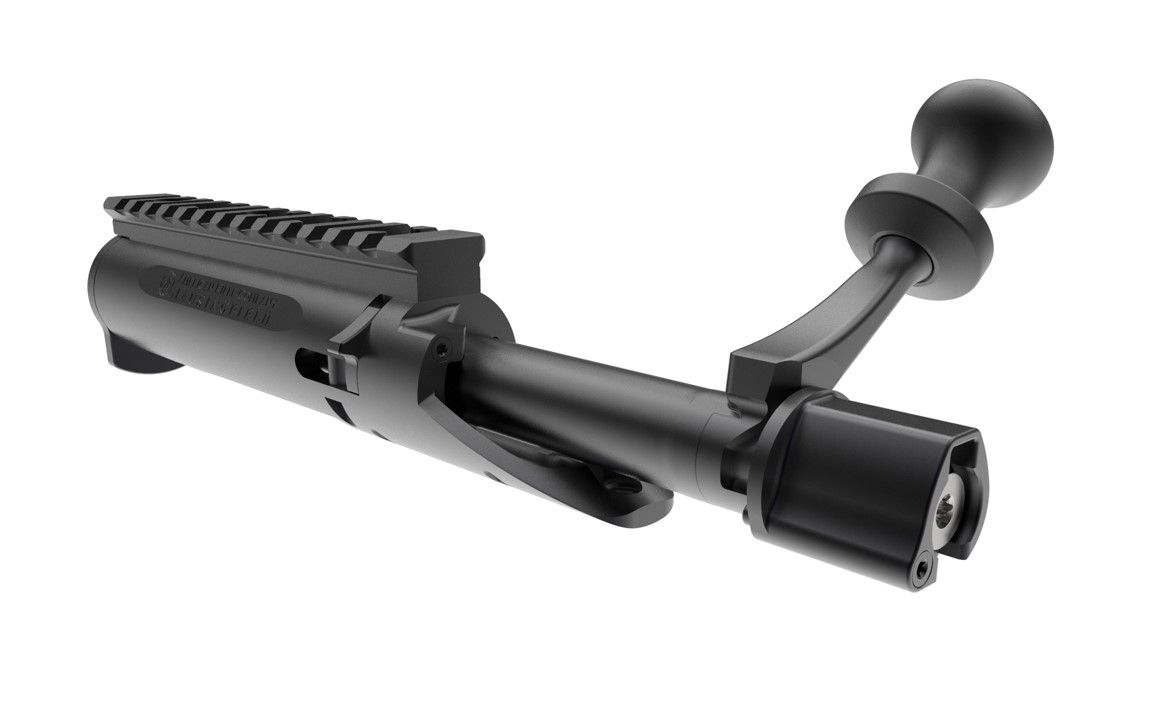
Closed Top Mausingfield
Typically Used For: Target Rifle
Mag Well: Designed for detachable magazine, AICS pattern. No binder plate is required in magazine. Receiver does not have feed lips for BDL bottom metal (non-detachable magazine).
Ejection Port: Side opening, continuous interface with Picatinny rail.
Scope Rail & Scope Ring Attachment: Picatinny rail only. (Included with action) Keyed interface with 5 screws.
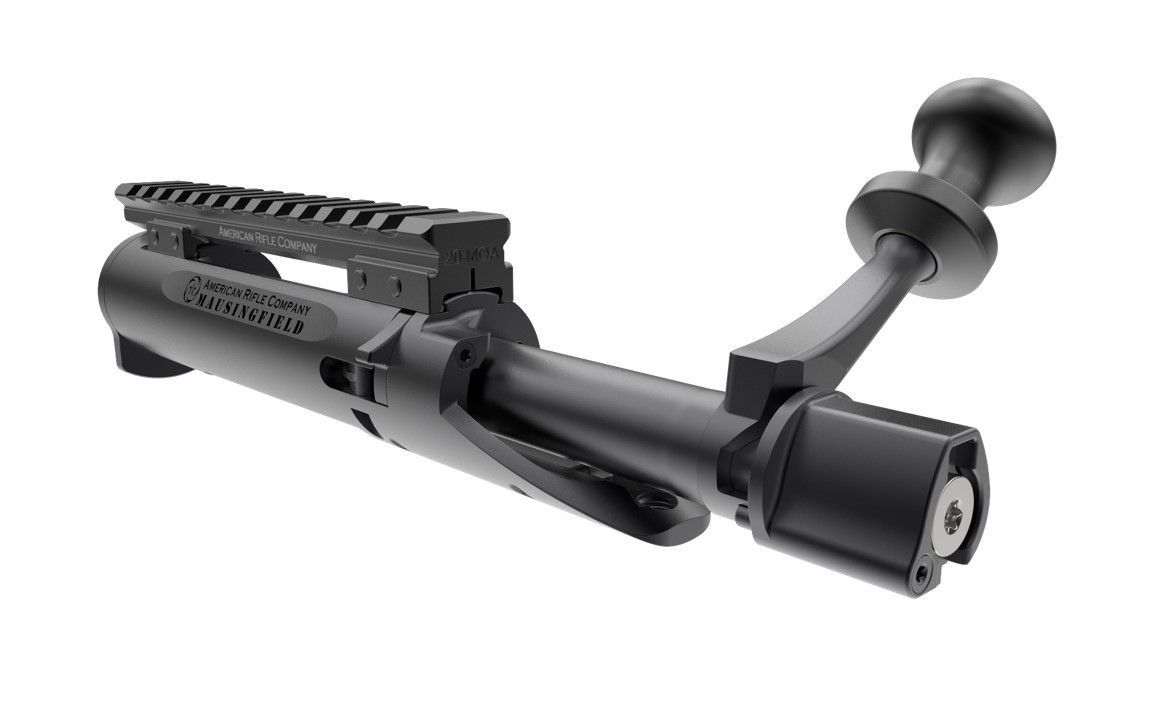
Open Top Mausingfield
Typically Used For: Hunting Rifle with BDL bottom metal
Mag well: Designed for BDL bottom metal (non-detachable magazine, load through the top). Short actions only: If detachable magazine is used, magazine must have a binder plate or bullet tips will catch on the front of the receiver mag well. (It is cut like a standard Remington 700.)
Ejection Port: Side and top open, Picatinny rail spans ejection port. Greater access for loading non-detachable magazine.
Scope Rail & Scope Ring Attachment: Picatinny rail (Included with action) or direct mount rings, see product image for rings. Rail has dovetail interface with 4 cross screws.
- Complete action
- 2 Trigger pins
- Tools: washer to compress striker spring, 6-32 x 1/2 screw, and corresponding washer for bolt assembly
Boasting the multi-caliber support of toroidal locking lugs that never need lapping, an interlocking scope mount, a Mauser extractor and a Springfield ejector, American Rifle Company’s Mausingfield action is a unique fusion of modern design and battle-proven features from bolt actions past. The Mausingfield is compatible with aftermarket components designed for use with the Remington Model 700, such as triggers, trigger guards, and magazines, stocks, and chassis. And as if that’s not enough, the Mausingfield is also compatible with Savage barrels and lock nuts, enabling you to install off-the-shelf turnkey barrels without the need for expensive equipment or custom machining.
The Mausingfield ushers in the era of the match-accurate build-it-yourself rifle. State of the art manufacturing and high grade materials are used to make the Mausingfield right here in the USA.
The Mausingfield is not a Remington clone. It’s a bolt action in a class by itself, derived from a comprehensive understanding of what a bolt action must do, and decades of both engineering and manufacturing experience.
At American Rifle Company, we only do best. We do the Mausingfield.
SAFETY AND TESTING
Read this section! You might actually find it interesting and entertaining.
American Rifle Company catastrophically tests firearms built on Mausingfield actions to ensure that the resulting failures will not seriously injure or kill either the user of the firearm or bystanders. It is not safe to use any firearm in any manner other than that prescribed and intended by the manufacturer. The tests described below were performed under controlled conditions by experienced professionals. Do not attempt to replicate these tests yourself.
We conducted tests to observe and document the manner in which gas and particles would escape from a Mausingfield action in the event of a complete case head separation. A Mausingfield action was fitted with a barrel having a special chamber that did not support the portion of the cartridge case that extends 0.22 inches (5.6mm) forward of the extraction groove. To further ensure that the case head would separate from the body, we cut a groove around the case wall of the 300 WSM cartridges used for testing. Detailed video footage of the test was captured using a high-speed camera.
During the first case head separation test, the forward scope rail mounting hole of the receiver was left unobstructed. Upon firing, the case head separated from the case body, releasing gas and particles into the action. A jet of gas and flame escaped from the forward scope mounting hole, and a blast emanated from both the ejection port on the right side of the action and from the bolt-stop port on the left side. After the test, we inspected the action and found that the bolt and receiver assembly were undamaged and fully functional in spite of being contaminated with unburnt powder.
During the second case head separation test, a screw was used to plug the forward scope rail mounting hole of the receiver. During this second test, the camera was repositioned and captured blasts that emanated from the bolt-stop port on the left side of the action, and from between the bolt shroud flange and the aft bridge of the receiver. After the test, we inspected the action and discovered that the bolt and receiver assembly remained functional, but that the forward end of the extractor had been bent during the test.
The fact that the extractor remained undamaged after the first test, but was found to be bent after the second, might suggest that the pressure within the receiver was higher during the second test. This is consistent with the gas being unable to vent through the forward scope rail mounting hole during the second test; however, the deformed case heads recovered after each test were not identical. This means that during the second test, the case head might have impinged upon the extractor in a way that bent it. Because of this uncertainty, it is not possible to draw a definitive conclusion regarding the actual pressures within the forward end of the receiver. Nevertheless, because a jet of gas and flame escaped from the forward scope rail mounting hole of the receiver, it makes sense to vent the receiver, as doing so helps to reduce the mass flow directed towards the shooter. For these reasons, we redesigned the Mausingfield receiver to include vent holes thereafter.
Another test was conducted to observe and document the effects of firing a factory 300 WSM cartridge in a Mausingfield rifle fitted with a properly chambered barrel with the bore obstructed by a metal cleaning rod. Both the receiver and the bolt head of the Mausingfield action used for the test were made from 4340 steel having a measured hardness of approximately 53 Rockwell C. Once again, detailed video footage of the test was captured using the high-speed camera.
When the rifle was fired, blasts emanated from both the ejection port on the right side of the receiver and from the bolt-stop port on the left side. The explosion emanating from the ejection port tore the extractor from its retaining collar and severely deformed it. The extractor was found dangling from the action, captured by its forward end, which remained trapped between the bolt head and the receiver.
The bolt stop and the ejector remained perfectly intact and functional in spite of the explosion of gas through the port in which they are located.
The bullet and cleaning rod were forced approximately eight inches down the bore before coming to a stop. The pressure caused the barrel to swell but not rupture.
Tools were required to open and retract the bolt. Upon doing so, we found fragments of brass within the action. Next, we removed the barrel by unscrewing it from the receiver and found within its chamber the remnant of the 300 WSM case with approximately half of the head missing.
The locking lugs of the bolt head remained largely intact, as did the surface within the receiver that they bear against. The ejector-side slotted lug sustained more damage than did the solid lug. This is not surprising, considering that it is the weaker of the two lugs and bears against the stiffer portion of the receiver. Overall, the lugs performed extremely well, effectively preventing the rearward ejection of the bolt into the shooter’s face.
The fact that the action stayed completely together is extremely important. The bolt was not ejected from the rifle. Although the action was destroyed during the test, it is unlikely that a shooter would have sustained any injury at all, especially if wearing eye protection.
The design of the Mausingfield action, and in particular, its flanged bolt shroud similar to that used in the Mauser 98, prevented much of the escaping gas and particles from reaching the shooter’s face. To simulate a human shooter, we secured a Styrofoam head to the buttstock of the test rifle in a lifelike shooting position. The same head was used for both the case head separation tests and the barrel obstruction test. The head was not cleaned between tests. In the photo below, the byproduct of combustion that accumulated during the three tests is clearly visible on the right cheek of the head. A shooter wearing eye protection and holding the rifle during the tests would not have sustained serious injury. However, the test results emphasize the importance of always wearing eye protection when shooting, because even a single tiny particle striking the eye at high velocity is enough to cause serious injury.
An action needs to have a margin of safety to resist the dangerously high loads resulting from misuse. The margin of safety stems from both proper design and proper heat-treatment of the steel from which the action is made. Therefore, the Mausingfield action must never be subjected to temperatures above 400°F (204°C) for any reason, because doing so will significantly weaken it and compromise its safety margin. The Mausingfield must not be subjected to high-temperature surface treatments such as ferritic nitrocarburizing or salt-bath nitriding, because such treatments are conducted at temperatures ranging from 900-1200° F (480-650° C). These treatments are marketed under several trade names, including Nitrotec®, Tufftride®, Tenifer®, QPQ®, and Melonite®. While these finishes might be suitable for some firearms, they are not suitable for the Mausingfield and may not be suitable for other bolt actions either.
Remember, safety margins are established so that you will not be seriously injured or killed in the event that you do something really stupid or careless. Under no circumstances should you subject any American Rifle Company firearm to an environment that will reduce its safety margins.
COMPATIBILITY WITH AFTERMARKET COMPONENTS
If you wish to customize your rifle, compatibility provides flexibility by allowing you to choose from many commercially available components.
The Mausingfield receiver is compatible with triggers, trigger guards, and magazines designed for use with the Remington Model 700 (hereafter M700). Below the stock line, the Mausingfield receiver is similar in shape to the M700, making it compatible with many of the chassis systems and stocks designed for the M700. However, the ejection port of the Mausingfield is slightly different than that of the M700. The Mausingfield also has a bolt stop that is centered on the bore axis and protrudes from the side of the receiver. Thus, when fitting a Mausingfield barreled action to a stock designed for the M700, slight alterations may have to be made to the stock near the ejection port and the bolt stop.
The Mausingfield action is not compatible with barrels designed for use in the M700.
The Mausingfield action is compatible with some barrels and locknuts designed for Savage bolt-action rifles. See the section titled “Barrels for Your Mausingfield” for more information regarding the use of Savage barrels.
The parts comprising the Mausingfield action are not compatible with any corresponding parts used for any other action. These actions include those manufactured by Remington, Savage, and Winchester, or by any company that manufactured Mauser M98 actions, past or present.
The Mausingfield action uses a proprietary accessory rail for scope mounting that interlocks with the receiver. A STANAG 4694 (MIL-STD-1913 aka Picatinny) accessory rail is included with the purchase of an action. The unique Mausingfield scope-mounting interface makes the action incompatible with chassis systems designed to directly engage the top of the M700 receiver or that of any other rifle.
BARRELS FOR YOUR MAUSINGFIELD
Mausingfield actions with serial numbers of M5A3-00005 through M5A3-00024 use a 1.125” x 20 UN 2B thread, making them compatible with commercially available Savage large shank barrels and locknuts.
Mausingfield actions with serial numbers of M5A4-00025 and higher and all M7's use a 1-1/16” x 20 UN 2B barrel thread, making them compatible with commercially available Savage small shank barrels and locknuts.
Both types of barrels can be easily installed without the need for custom machining. Please note that the 1-1/16” x 16 UN thread of the M700 is not the same as that of either the Mausingfield or the Savage. Therefore, Remington M700 barrels are not compatible with the Mausingfield.
The Mausingfield can also be fitted with threaded and shouldered barrels that do not require a locknut. Such barrels should have a minimum shank diameter of 1.20 inches (30.5 mm), unless they are to be installed on a Mausingfield action having a serial number between M5A3-00005 and M5A3-00024. For actions with any of those numbers, the barrels should have a minimum shank diameter of 1.25 inches (31.7 mm).
INTERLOCKING SCOPE MOUNT AND CHOOSING THE INCLINATION ANGLE OF THE RAIL
American Rifle Company developed an advanced scope mounting system for the Mausingfield that provides the security of an integrally machined rail and the interchangeability of a removable rail.
When a typical rifle is fired, it undergoes high rates of acceleration, on the order of 200 to 300 g’s, thereby imparting high forces to the scope mounting system. These forces can cause slippage between the receiver and the mounting system, ultimately resulting in sight misalignment and reduced accuracy. This is especially true if only friction is relied upon to maintain the relationship between the scope mounting system and the receiver, as is predominantly the case with the Remington M700 and many of its clones.
A receiver having an integrally machined rail eliminates the possibility of slippage. However, in order to better utilize the available range of elevation adjustment within a scope, a rail must be inclined with respect to the rifle’s bore. But different scopes require different amounts of inclination, making integrally machined rails a bit encumbering when you are selecting a scope.
Ideally, the connection between the rifle and the scope should be rock solid, while also affording the shooter the ability to replace one scope for another which may be better suited for a different application. To fulfill these requirements, the Mausingfield receiver has a dovetail with tapered walls that engages a slot within the rail. Four 4mm socket head cap screws are used to clamp the rail to the receiver and the screws interlock with the receiver. The resulting connection makes slippage between the two impossible, thus providing both security and interchangeability.
When you purchase a Mausingfield, you must specify the inclination angle for the rail supplied with it. To choose the rail angle that will make available most of the elevation adjustment within the scope, you need to determine how much elevation adjustment the scope has, divide that number by two, and then subtract either 15 MOA or 4.4 milliradians. 15 MOA (or 4.4 mils) is subtracted because approximately 6 MOA (1.7 mils) must be allocated to obtaining a 100 yard (or 100 m) zero, assuming the scope is mounted approximately 2” (50mm) above the bore. In addition, approximately 9 MOA (2.6 mils) must be allocated for build tolerances of the rifle, the scope mount, and the scope. This is an approximation, but it is more than adequate for choosing the rail angle. In general, 20 MOA (5.8 mils) is appropriate for scopes having 30mm tube diameters, and 30 MOA (8.7 mils) is appropriate for scopes having 34mm tubes.
THE BOLT + TOROIDAL LOCKING LUGS + AN INTERCHANGEABLE BOLT HEAD
The Mausingfield bolt uses an interchangeable bolt head that is perfectly suited for multi-caliber rifles that use Mauser extractors. Additionally, the Mausingfield receiver and bolt head interact across cleverly shaped bearing surfaces that eliminate the need for lapping in order to establish proper contact between the two when the bolt is closed.
Bolt actions that do not utilize bolts fitted with articulating heads must be lapped to ensure that the bearing surfaces of the locking lugs properly contact the corresponding bearing surfaces within the receiver. As is typically the case with such actions, when the bolt is closed an interaction between the sear and the firing pin forces the aft end of the bolt upwards, thus misaligning it with respect to the receiver. Because the bearing surfaces of the receiver and the locking lugs are flat, any misalignment between the receiver and bolt must necessarily separate these surfaces. The lugs ultimately come to bear against the receiver when the rifle is fired, but not without excessive movement of the bolt. This movement is detrimental to accuracy, and in order to prevent it, gunsmiths lap the lugs against the receiver to ensure that the two are contacting one another when the bolt is closed.
Lapping is done by applying an abrasive substance having the consistency of grease to the bearing surfaces and then cycling the bolt repeatedly. With every cycle the abrasive agent wears the bearing surfaces, thereby increasing the area across which they make contact with one another. When the bearing surfaces of the lugs completely contact the corresponding bearing surfaces of the receiver, the lapping process is complete.
Laboriously lapping lugs is a reasonable way to ensure that the bolt bears properly against the receiver; however, it does establish the two as a matched pair. As such, a lapped receiver is rather impractical for use in an accurate multi-caliber rifle. Reconfiguring the rifle for use with a cartridge having a different head diameter requires introducing a second bolt. In order for both bolts to properly bear against the receiver, the lugs of each must be iteratively lapped against it, slightly altering the receiver with each iteration. This process must be repeated until the bearing surfaces of the receiver and of both bolts converge upon a common solution, enabling the lugs of each bolt to properly bear against the receiver. This is considerably more laborious than lapping a single bolt against a receiver. Introducing a third bolt would add yet another and more significant degree of complication. As a result, actions that require lapping do not support bolt interchangeability without considerable expense, and are therefore not ideally suited for use in accurate multi-caliber rifles.
The use of bolts fitted with articulating heads do not require lapping, and actions like the Savage 110 that utilize such bolts are well suited for multi-caliber rifles. However, an articulating bolt head will not function properly if used in conjunction with a Mauser extractor. The articulating head must be free to seat itself against the receiver. A Mauser extractor, being a flat spring, would impinge upon the articulating head, restricting its freedom of movement and biasing it towards a particular direction. Not being able to use a Mauser extractor with bolts having articulating heads is a significant shortcoming of such a design.
The Mausingfield receiver and bolt are designed to properly engage one another when the bolt is closed, regardless of the alignment between the two. The design obviates the need for lapping, as well as the need for an articulating bolt head. The Mausingfield uses a main bolt body connected to a non-articulating bolt head by a pin. We chose the two-piece bolt design to facilitate the assembly of the bolt with the Mauser type extractor and its retaining collar, as well as to support the use of interchangeable bolt heads and extractors for multi-caliber rifles. Since lapping is unnecessary, bolt heads are never matched to the receiver. Therefore, reconfiguring the bolt is a simple matter of disassembling and then reassembling with the appropriate bolt head and extractor.
The Mausingfield bolt head has two diametrically opposed locking lugs. The bearing surfaces of the locking lugs are shaped as portions of a torus, and bear against surfaces within the receiver that are shaped as portions of a sphere. Regardless of the alignment between the bolt and receiver, these bearing surfaces maintain contact along arcs that approximately bisect the bearing surfaces of the lugs. When the rifle is fired, the bearing surfaces are elastically flattened against one another, enabling proper load sharing between the lugs, thus increasing the load-bearing capacity of the breech.
The Mausingfield bolt head does not articulate with respect to the bolt body, and when the two are assembled, they function as a unitized part. Thus, the bolt head and the receiver are able to properly engage when the Mauser extractor impinges upon the unitized bolt assembly. Such engagement would not be possible if the bolt head were able to articulate. In fact, it is the entire Mausingfield bolt assembly that can articulate within the receiver to ensure proper engagement between the two. Excessive movement of the bolt within the receiver is prevented by an enlarged diameter at the aft end of the bolt that closely fits the receiver bore only when the bolt is closed. Opening the bolt disengages this close fit. The bolt can then be cycled while having 0.012 inches (0.30mm) of diametral clearance between it and the receiver. The ample clearance makes the Mausingfield extremely tolerant of dirt and other contaminants that will likely be encountered in adverse field conditions. Additionally, it allows for the use of paint finishes such as Cerakote™.
MAUSER EXTRACTION
A Mauser extractor is utilized within the Mausingfield action because it is quite simply the most reliable and robust extraction system yet invented for use in bolt-action rifles.
There are many extractor designs that are adequate under ideal circumstances. However, extractors must be designed to function even in sub-optimal conditions. Fortunately, Paul Mauser did exactly that when he designed the extractor for use in his legendary rifle Model 1898 (hereafter M98) after inventing and patenting most of the other extractors in use today. The extractor Mauser ultimately used in his M98 is the only one fit for duty within a bolt-action rifle intended for use in adverse conditions. Its unique ability to control a cartridge as it is stripped from the magazine and to eject it even if the bolt is short-stroked is a well-known benefit. This ability reduces the likelihood of jams resulting from accidentally feeding one cartridge into another that is already chambered. But there are significant, albeit lesser-known, benefits of Mauser’s extraction system.
The M98 extractor does not rotate with respect to the case during the extraction process, making it more effective than extractors that do. That’s because any rotation of the extractor about the case not only encourages the extractor to disengage the case, but also reduces the efficiency of the extraction process. During the Mauser extraction process, relative motion occurs only between the hardened steel parts of the action that easily slide against one another. There is no tendency for the M98 extractor to dig into the much softer case head because it does not move with respect to the case head, as do all of the other extractors used in manually-loaded rifles having rotating bolts.
Additionally, the M98 extractor utilizes an angled tongue that engages a similarly angled groove within the bolt in order to prevent outwardly radial movement of the extractor while undergoing high axial loads, further ensuring that the case is not prematurely disengaged. As the force pulling the extractor rearwards increases, the inwardly-directed radial force also increases, keeping the extractor engaged with the case head. Only Mauser’s extraction system boasts such clever and robust functionality.
The M98 extractor reduces the likelihood of the case head failing during difficult case extraction by engaging more of it than does any other type of extractor.
The M98 extractor is larger and more robust than all others and is therefore better able to survive case head separation and overpressure events. Such events often destroy the delicate extraction systems comprising small springs, pins, and plungers used in other actions.
The M98 extractor is passive. It does not require additional springs because it is itself a spring. Extractors relying upon small springs to either pivot, or worse yet, slide into engagement with the case head extraction groove, must be kept clean to function properly whereas the M98 extractor is essentially insensitive to contaminants.
No other bolt-action extraction system is as time-tested or as battle-proven as that of the Mauser M98. While no extraction system is completely reliable, the M98 system is certainly far more reliable than any other, especially when used in adverse conditions. Hence, it has been adopted for use within the Mausingfield.
In both the Mauser M98 and the Mausingfield, the extractor is attached to the bolt by an extractor collar. The Mausingfield uses an extractor collar that is more robust (though functionally similar) than the split flexible collar used in the M98. With every assembly cycle, the M98 extractor collar undergoes enough deflection to be permanently deformed. After a few cycles, the collar has been deformed enough to impinge against the inner walls of the receiver when reintroduced to the action. This impingement manifests itself as an undesirable drag force that the shooter will feel when manipulating the bolt. In contrast to the M98 collar, the Mausingfield collar is an inflexible solid steel ring with a protruding T-shaped lug that engages the extractor to secure it to the bolt. The extractor is trapped between a bolt head and a bolt body that are pinned to one another. Deforming it is not necessary for assembly, so its shape never changes, and it therefore always functions properly and without drag.
Assembling the Mausingfield extractor, collar, bolt, and bolt head is much easier to do than assembling those parts on the M98. Having to deform the flexible collar makes assembling the M98 difficult. Because Mausingfield parts don’t have to be deformed for assembly, they can easily be fitted together.
SPRINGFIELD EJECTION
The Mausingfield uses an ejector that is very similar to that used in the Model 1903 Springfield—a compact, hardened-steel ejector freely pivoting on a high-strength steel pin. It is located at the aft end of the receiver, well away from the breech where the blast resulting from an overpressure event or a case head failure would be most intense. The momentum of the rearward-moving bolt forces the ejector to pivot into engagement with the case head through a slot in the bolt face. The Springfield ejector also enables the shooter to control the intensity of the ejection process.
The Springfield ejection system is far more robust and reliable than those utilizing a small, cylindrical plunger retained by a tiny pin and forced through a tight-fitting hole by a small spring. A spring-plunger ejector is located within the forward end of the bolt, which is a poor location for such a delicate assembly because it is essentially at “ground-zero” during an overpressure event or a case head failure. Blasts can easily drive the plunger backwards with enough force to deform or shear its tiny retaining pin, leaving it permanently retracted within the bolt face.
Moreover, a necessarily small spring behind the plunger is often highly stressed and may relax over time. As this happens, its effectiveness diminishes.
Another drawback to spring-plunger ejectors is that they are used within recessed bolt faces that easily trap contaminants introduced by case head failures and adverse field conditions. Additionally, as the case head enters and exits the recessed bolt face, the forced impingement of the ejector against it sometimes removes tiny flakes of brass, which accumulate within the recess. Any of these contaminants can render the ejector ineffective by hindering its motion.
To be fair, the spring-plunger ejectors do work most of the time, especially with properly functioning ammunition. They can be cleaned and lubricated regularly to keep them working, and springs can be replaced. But the Springfield ejector is essentially impervious to contaminants and does not require any maintenance. Nor does it rely upon a small spring to drive it. Its reliability is derived from the elegant simplicity of its design.
The Springfield ejection system is of a type sometimes referred to as an “inertial system.” Such a system enables the shooter to control how far the cases are thrown. The shooter can protect the necks of the spent cases by slowly retracting the bolt, gently ejecting them so that they fall next to the rifle. Or the shooter may choose not to fully retract the bolt so that the spent cases can be manually removed through the ejection port. If the shooter is not concerned with collecting the brass, the spent cases can be ejected well clear of the rifle by rapidly retracting the bolt. These options are not offered by actions that utilize spring-plunger ejection systems. Moreover, spring-plunger ejection systems can deform case necks because the ejection process begins immediately when the bolt is withdrawn, causing the case neck to strike the inner wall of the receiver.
The Springfield ejection system is used in the Mausingfield because it is the best yet devised for use in bolt-action rifles.
INTEGRAL RECOIL LUG
The Mausingfield receiver has an integral recoil lug. Other manufacturers of bolt actions advertise a strength advantage associated with such a lug, but American Rifle Company regards such claims as misleading. In truth, the loads imparted to the recoil lug are modest for any appropriately sized lug made from steel, integral or not. The Mausingfield receiver has an integral lug, not for added strength, but simply because it makes barreling the receiver easier. If the lug is an integral part of the receiver, there is no requirement to pin it in place, or to otherwise maintain its orientation with respect to the receiver.
In contrast to its competitors, the Mausingfield offers other real and substantive advantages which do not need to be misrepresented or overstated. The Mausingfield simply stands on its own merits.
SURFACE TREATMENT
The M7 Mausingfield is supplied with a salt bath nitride surface finish to harden and blacken its surfaces. The resulting finish effectively resists corrosion and reduces friction thus enhancing the smoothness of the action. The bolt head is coated with diamond-like carbon (DLC) surface finish. DLC is an extremely hard and wear-resistant layer on the exterior surfaces. This will reduce the friction between moving parts, thereby enhancing the smoothness of the action. DLC treated surfaces hold oil which enables them to resist corrosion reasonably well.
M5 Mausingfield vs M7 Mausingfield
The M5 Mausingfield was updated to the M7 in 2019.
M7 Improvements
- Short action weight 2.25 pounds, long action weight 2.5 pounds
- 83-degree bolt rotation improves knob to scope clearance and shortens bolt cycle.
- Bolt-lug guide rail improves anti-binding performance.
- Dual cocking-cams and reduced cocking-cam pitch eases bolt lift.
- Bump-free bolt closure improves the feel of the action when closing the bolt.
- New bolt stop design improves durability and functionality.
- Enlarged ejection port improves manual access. (For open top version)
- Heavier striker improves ignition reliability.
- Machining in the hardened condition improves final form.
- Salt-bath nitride finish improves corrosion resistance and reduces friction.
The Persistent
- Proudly engineered and manufactured in the USA
- Interchangeable bolt heads support multi-caliber rifles
- Toroidal locking lugs do not require lapping
- Integral recoil lug
- Controlled-round-feeding for best reliability
- Battle proven Mauser style non-rotating claw extractor
- Battle proven Springfield style inertial ejection
- Extremely strong one-piece bolt construction
- Machined from high quality steels that are both strong and tough
- Ergonomically designed bolt knobs
- Compatible with Savage pre-fit barrels and locknuts
- Compatible with triggers designed for the Rem 700
- Compatible with stocks and chassis designed for the Rem 700
